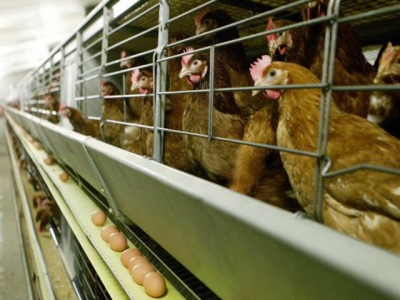Progress on OIE Global Hen Housing Standards

Progress on the OIE’s Global Hen Housing outcome-based standards is taking place but may not come into force until 2019/2020.
Photo: Michel Zoeter
Kevin Lovell, who represents the OIE on the Ad-hoc ‘Animal Welfare and laying hens production systems’ working group, said their delayed reformatted report would be discussed by the OIE’s Code Commission in the next few days.
It is likely that there will then be a consultation, enabling all 180 countries belonging to the OIE to engage and lobby their respective chief veterinary officers. The next meeting of the Ad-hoc group is scheduled for the 2nd quarter of next year, meaning it is unlikely there will be discussion at the UN General Assembly in 2018. A probable decision is expected in 2019 with implementation thereafter.
Mr Lovell said the Ad-hoc working group was keen for the standards to be based on a range of issues including:
- An outcome based approach
- Covering all production systems
- Will not include breeding industry
- Will not be too prescriptive
- Be applicable in multiple jurisdictions
- Allow for individual countries to add to the standards
It will cover stockmanship and post-lay activities, including the disposal of spent hens.
Standards based on outcome measures
Joy Mench, Professor of Animal Science at the University of California, Davis, welcomed the move to base the standards on outcome measures, noting the increasing number of different welfare assessments around the world.
Standards developed by the industry
Some have been developed by industry, such as the United Egg Producers standards, while others have been drawn up by retailers, including McDonalds and Walmart. Animal welfare groups have labelling standards, such as RSPCA Assured and the Global Animal Partnership and there are also sustainability programmes that companies have drawn up which have some animal welfare measures.
Resource based welfare standards
She said too many animal welfare standards were resource-based, specific and often prescriptive. For example, in an enriched cage system, the standards might cover floor, nest, perch area for the hen, food and water space, feed composition, substrate material and other issues. While they might inspire public confidence and were easy to measure, they were often inflexible, did not improve animal welfare and were not based on anything.
Space not the most important welfare factor for birds
Prof Mench said Professor Marian Dawkins’s animal behaviour research at the University of Oxford had shown that space was not the most important welfare factor for birds – rather ventilation, air quality and litter management were key.
This has led to a move towards more outcome based work, with a greater focus on welfare problems that actually occur on farms and a move to allow producers to use different strategies to fix problems.
For example, for feather loss, farmers should be encouraged to assess the problem, benchmark it against other farms, put in a reduction plan, implement changes and then reassess.
Importance of training, advice, research and analysis
She said she was pleased that the OIE’s goal were not prescriptive and the standards would stress the importance of training, advice, research and analysis.
“Outcome based studies are most relevant to animal welfare, can be measured relatively easily and cause minimal disruption to the hens.
“The OIE measures need to be practical and can be evaluated quickly with little disagreement. The standards must not have vague language and auditors will need to be well-trained.”
She highlighted the University of Bristol’s led AssureWel scheme has a great example of an outcome based approach, which looks at just 7 measures for laying hens and can be audited in 10-15 minutes.
A global standard accepted across the entire industry
Julian Madeley, IEC director general, said he felt the “first draft represented a very good place for the industry” but that it was vital the global standard was acceptable across the whole industry.
It was especially important that the standard was supported in Asia and Latin America which has a preponderance of traditional cage systems.
Related news
Tools

Phối trộn thức ăn chăn nuôi

Pha dung dịch thủy canh

Định mức cho tôm ăn

Phối trộn phân bón NPK

Xác định tỷ lệ tôm sống

Chuyển đổi đơn vị phân bón

Xác định công suất sục khí

Chuyển đổi đơn vị tôm

Tính diện tích nhà kính

Tính thể tích ao



 The role of enzymes and lysolecithins in eubiotic…
The role of enzymes and lysolecithins in eubiotic…  Keel bone damage in poultry layers explored
Keel bone damage in poultry layers explored